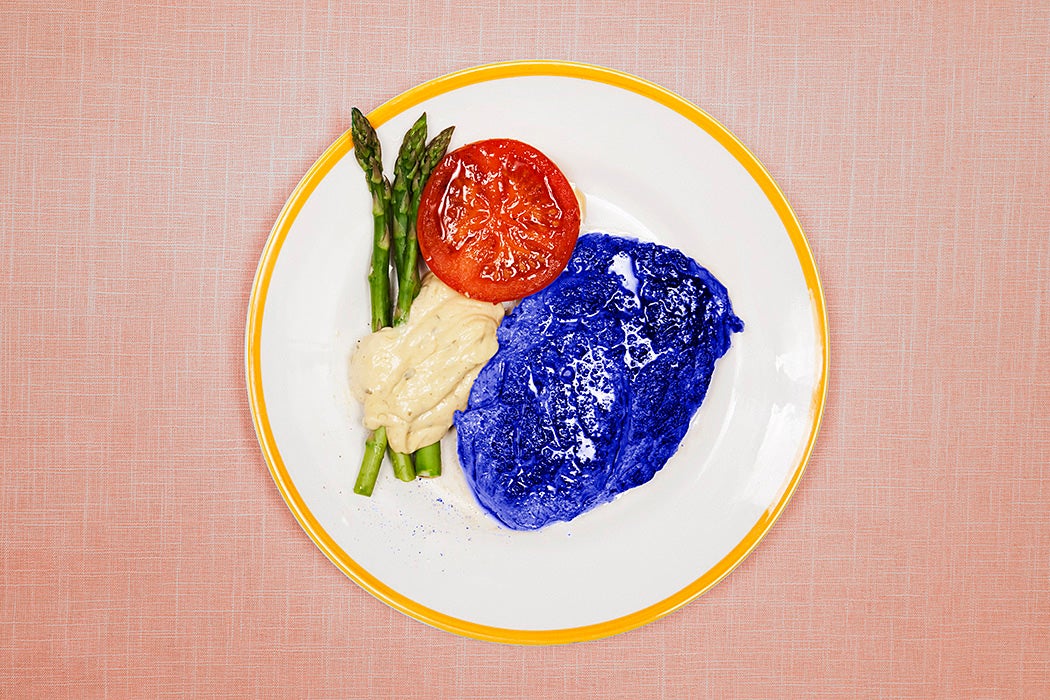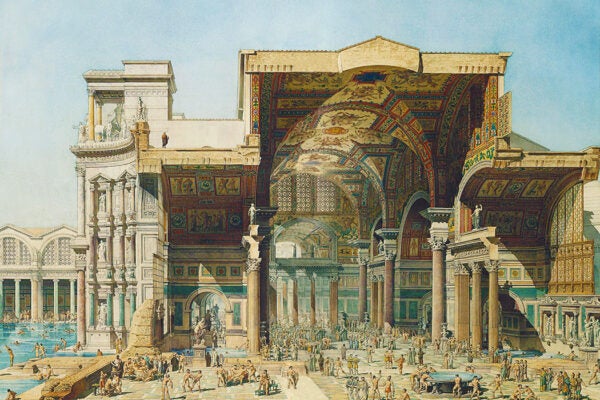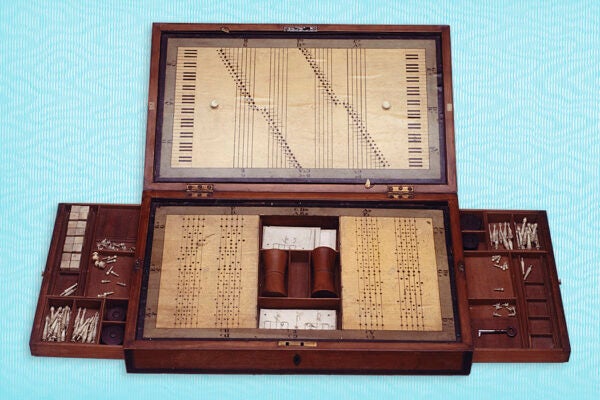You enter a dimly lit room and sit down to a hearty meal along with a group of fellow diners. A real “meat and potatoes” kind of thing—literally. It’s a plate full of steak, potatoes, and peas. Classic. You dig in. It’s delicious. The steak is cooked just the way you like it. The potatoes, creamy. The peas, fresh and sweet. You’re about to take another bite, when suddenly, a light is turned on.
The switch instantly turns the room from what historian Joel Harold Tannenbaum describes as “unusual, a little low,” into more conventional lighting. You look down at your meal. That delicious steak and potatoes has somehow turned into a horror show.
“The steak is bright blue, the potatoes are green, and the peas are a ghastly, vivid red,” Tannenbaum writes.
You and your companions, to put it scientifically, freak out. Some are “agitated and angry,” while others “grow nauseated and run to the bathroom to vomit up the day-glo contents of their half-finished meals.” You look for the manager, because you’re demanding a refund.
But this isn’t a restaurant at all, it’s an experiment. It’s sometime in the 1970s, and you and your tablemates are actually study participants. The study, Tannenbaum writes, is a well-known one, getting press for decades in “peer-reviewed journals and dissertations, on public radio, and in media outlets ranging from the Atlantic Monthly to the New York Times Sunday magazine.” The study was about color perception in marketing and the role it plays for consumers.
However, there’s no evidence that this specific experiment ever existed. As Tannenbaum points out, “It seems more likely…that the tale of the blue steaks was an amalgamation of different stories that coalesced over decades.”
The first reported instance of the phantom study was in a 1973 article by Jane Wheatley in the trade journal, Marketing, under the headline “Putting Colour into Marketing.” Wheatley explained the study but provided no citation. But the story was so fascinating that the article was illustrated with a centerfold of “bright blue steak, a handful of lime-green french fries, and a smattering of red peas.”
Wheatley’s article was later cited in a German perfume company’s newsletter, which equated “a preference for various colors with emotional tendencies.” Subsequent articles either cited a “classic study” with little else to substantiate it or styled it as a study by Wheatley herself.
By the 1970s, Tannenbaum writes, “there were decades of food color research experiments” and stories that could have been conflated. One from 1936 used misleadingly colored desserts and found that tasters had trouble identifying their flavors. During World War II, novelist Shirley Jackson held a dinner party and served oddly colored foods—namely “blue steaks and red potatoes.” In 1959, there was an experiment with reconstituted dehydrated food, which did use lights to change the colors of the meal. A newsreel of the experiment “shows one subject putting down his knife and fork in apparent disgust at the sight of a green steak.” And Alfred Hitchcock got into the mix when, in 1970, he claimed to have served “an entire meal of dyed-blue foods to party attendees.”
Weekly Newsletter
In the background of many of these events was the FDA’s actual work on food coloring, which led to a ban on some synthetic red and orange food dyes in 1950. And in 1956, a manufacturer of lemon pies was prosecuted for using “Sunset Yellow” dye, which a competitor viewed as fraud.
“Altogether,” Tannenbaum writes, “it seems that dyed foods weighed heavily on people’s minds in the mid-twentieth century.”
Any of these could be the original source of the story. The elements added in the 1970s likely took hold because they touch on topics that consumers were (and are) concerned with—“food packaging, flavor enhancement, and the experimental ‘new cookery.’” People want to know that what they’re seeing and tasting is authentic and real, and whether that desire connects to a “mid-century trend for dyeing foods ‘unnatural’ colors” or a backlash against “food scientists (and/or food marketers) behaving badly, even maliciously, at the expense of the general public,” it’s resonated over the years. The legend of blue meat and red peas took on “a life of its own once it was adopted as a source by the nascent food sciences and their related multidisciplinary fields.”







